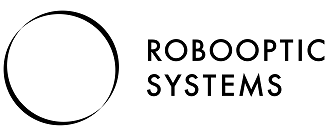Lenses are all-around
Recent advances in internet of things (IoT) applications expand the market opportunities in consumer technology such as smart phones and home appliances, automotive, medicine and plenty others. Growth potential is enormous. Many gaps need to be filled and solutions to newly arise challenges of making products faster, cheaper, and more reliable must be found. Traditional production and assembling approaches are with continuously smaller sizes of sensors, higher resolution, and more and more complex optics insufficient. High industrial standards are targeting not only camera modules – of which more than 5.5 billion units were produced in 2019 – but also LiDAR technology, projectors, lens to lens applications and fiber optics just to name a few. With aim to address the challenge, relatively new approach of Active Lens Alignment (ALEA) with high-tech synchronization between software and hardware is becoming number one choice.
What is Active Lens Alignment?
Active Lens Alignment encircles the process of affixing optical components, typically a lens and a sensor, while continuously measuring and analyzing image quality parameters throughout the alignment process to achieve the highest performance of the optics. Depending on application up to 6 degrees of freedom alignment with field of view up to 180° can be simultaneously achieved based on advance optimization algorithms. Prediction of glue-bed shrinkage is embedded in positioning process based on database obtained by machine learning. Arbitrary selection of applied glue is possible ranging from UV, heat, or more component curing mechanisms. With active control of MTF in several locations, intensity, edge detection, encircled energy etc. process ensures stabile serial production within sub-micron or sub-arcmin precision.
Why Active lens Alignment?
Decreasing size of optics technology on one side, and increasing complexity of products on the other, exceed capability of manual alignment approach. Furthermore, incomparable time efficiency, cost reduction by factor comparing to passive alignment, 24/7 fully automated and autonomous production as well as enormous adaptability to product characteristics are major reasons to maintain the competitiveness. Only few minor modifications are required to handle entire tree of similar products or completely different application. Modular concept ensures great variety of product size, weight, and measurement parameters according to customer demands.
Preliminary test and vertical assembly
With high-precision and cutting-edge cycle-time in mind company Robooptic Systems provides innovative solution for ALEA. In house development of hardware and software with own testing laboratory makes an optimal environment for continues prototyping and product optimization.
Modular approach with long list of its benefits is becoming a standard in the industry. However, Robooptic Systems is taking it on a new level. Instead of classical in-line configuration with a lot of unused space in between, a star distribution is developed. Main benefit of such an approach is reduced footprint of the ALEA station and more positioning options on production floor layout. Individual components may enter the process in array distribution on trays stacked in tray feeder or as a single unit per workpiece holder. The first option provides production autonomy for several hours where the second option is more appropriate for smaller series. For each finished product, an entire history of all its components and applied procedures are stored in database available to customer.
If all the criterions are passed the crucial part of active alignment takes its place in the center of the station. Robot arm and high precision actuators stack all the components in predefined positions, where optical setup supported with advance software performs the final positioning. Thus, the name vertical assembly since most of the steps are made in parallel. Great benefit of this approach is reduced cycle time.
Another key feature of ALEA made by Robooptic Systems is preliminary test of optical components. Once the lens and camera housing or any other pair of optical application meet on a 6-axis alignment setup the time is precious. Normally is this step the bottle neck of the entire process that dictate the common cycle time. Answer to this limitation was with elegant solution developed in Robooptic Systems R&D department. Preliminary test performs a broad match of lens optical path with sensor orientation. Consequently, relatively big area of potential solutions for global maximum is reduced to a much smaller area which additionally saves the time later by final alignment.
In response to the market demands the company Robooptic Systems provides their solution for active lens alignment with emphasis on production efficiency. More than 20 years of experiences in the field reflects in high performance applications and extremely low cycle time for ALEA. With early stage involvement of the customer’s engineering team, requirements can be implemented in the most efficient way.
